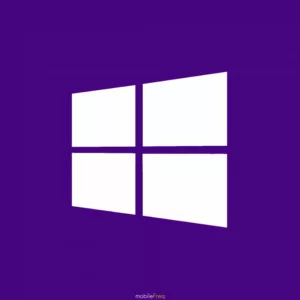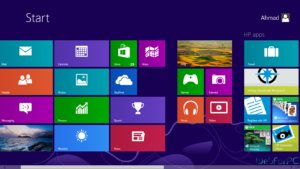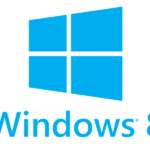
Windows 8.1 Download is a popular operating system developed by Microsoft Corporation. as an update to the Windows 8 operating system. in 2013, and it has gained popularity. among users due to its improved performance and enhanced features.
One of the main features of Windows 8.1 Product Key – MS Toolkit is the Start screen, which is more customizable. Users can now personalize their Start screen by adding and arranging live tiles. making it easier to access used apps and features. Additionally. Windows 8.1 Product Key Free the Start button has made it easier for users to navigate their way through the operating system.
Another significant improvement is the better integration of SkyDrive. Windows 8.1 Product Key Activation cloud-based storage service. which makes it easy to access and share files across many devices. The Windows Store has also, better search functionality. and an increased selection of apps, making it easier to find and download the apps you need. You Can Also Free Download: Windows 7 SP1
Windows 8.1 Activation Key 2023 also has improved security features. including better antivirus protection, and a built-in encryption system. ensuring that your data is secure and protected. Windows 8.1 Full Version is a reliable operating system. that offers a range of enhanced features and improvements. making it a popular choice for both personal and business use. Whether you’re a casual user or a power user, Windows 8.1 Registration Code is a reliable and secure option for your computing needs.
Windows 8.1 Download 64 bit 32 bit
I can guide you on how to download Windows 8.1 64-bit or 32-bit versions.
-
Go to the official Microsoft website.
-
Click on the “Download Windows 8.1” option.
-
Choose the language and edition of Windows 8.1 you want to download.
-
Select either the 32-bit or 64-bit version of the operating system. depending on your computer’s processor architecture.
-
Click on the “Download” button and wait for the download to complete.
-
Once the download is complete, you can create a bootable USB drive or DVD to install Windows 8.1 on your computer.
Review of Windows 8.1
Windows 8.1 was a significant improvement over its predecessor, Windows 8. The updated operating system. addressed many of the complaints and criticisms of the earlier version. particularly with regard to usability.
One of the most notable changes in Windows 8.1 was the reintroduction of the Start button, which had in Windows 8. The Start button allowed users to access the Start screen more. and made the operating system. feel more familiar to users who to previous versions of Windows.
The Start screen itself was also updated. with greater customization options and improved live tile functionality. The inclusion of the Windows Store was a welcome addition. as it made it easy to download and install new apps from the Start screen. Performance-wise, Windows 8.1 was also an improvement. with faster boot times and improved power management. The operating system was also more secure. with built-in encryption and better antivirus protection.
Windows 8.1 was not without its flaws. The integration of the touch-focused Metro UI. with the traditional desktop environment remained somewhat awkward and jarring for some users. particularly those using traditional mouse and keyboard input. Additionally. the lack of compatibility with some older software and hardware was a concern for some users.
Windows 8.1 FAQ
What is Windows 8.1?
Windows 8.1 is an operating system developed by Microsoft Corporation. It is an update to the Windows 8 operating system in 2013. It includes new features and improvements over the previous version.
What are the system requirements for Windows 8.1?
The least system requirements for Windows 8.1 are a 1 GHz processor. 1 GB of RAM for the 32-bit version or 2 GB of RAM for the 64-bit version. and 16 GB of free hard drive space for the 32-bit version or 20 GB for the 64-bit version.
How do I upgrade to Windows 8.1?
If you have a valid license for Windows 8, you can upgrade to Windows 8.1 for free from the Windows Store. Open the Windows Store app on your computer and search for “Windows 8.1 Update”. Download and install the update.
Can I still use Windows 8 apps on Windows 8.1?
Yes, all apps that worked on Windows 8 should still work on Windows 8.1. In fact, the Windows Store in Windows 8.1 has an expanded selection of apps and games.
Is Windows 8.1 still supported by Microsoft?
No, mainstream support for Windows 8.1 ended on January 9, 2018. But, extended support will continue until January 10, 2023. which includes security updates and bug fixes.
Can I downgrade from Windows 8.1 to Windows 8?
Yes, you can downgrade from Windows 8.1 to Windows 8 if you have a valid license for Windows 8. Yet, it may must a clean installation of Windows 8 and you will need to back up your data before downgrading.
Screenshot:

Best Features of Windows 8.1
-
User Interface: Windows has an appealing and intuitive user interface. that makes it easy to navigate and use the operating system. The Start menu, taskbar, and desktop are customizable. and the Windows Store provides access to a wide range of apps.
-
File Explorer: Windows comes with a powerful and flexible file. management tool called File Explorer. which allows users to manage their files and folders with ease. It includes features such as search, file compression, and thumbnail previews.
-
Cortana: Windows 10 comes with a personal assistant called Cortana. which can help users with various tasks such as setting reminders. and scheduling appointments. and searching the web.
-
Windows Hello: Windows Hello is a feature. that enables users to log in to their computers using biometric authentication. such as facial recognition or fingerprint scanning. It offers enhanced security and convenience.
-
Windows Timeline: Windows Timeline is a feature. that allows users to view and access their recent activities across devices. It provides a comprehensive view of a user’s digital footprint. making it easier to resume tasks from where they left off.
-
Windows Security: Windows comes with built-in security features such as Windows Defender. which provides protection against viruses, malware, and other threats. It also includes features such as firewall protection and device encryption.
-
DirectX: DirectX is a set of application programming interfaces (APIs) developed by Microsoft. for multimedia and gaming applications. It allows developers to create high-performance graphics. and audio for games and other applications.
Technical Details & Minimum System Requirements
Technical Details:
-
Latest version: Windows 10 version 21H1 (May 2021 update)
-
Architecture: 64-bit (also available in 32-bit)
-
License: Proprietary commercial software
-
Developed by: Microsoft Corporation
System Requirements:
-
Processor: 1 GHz or faster compatible processor with at least 2 or more cores
-
RAM: 2 GB for 64-bit or 1 GB for 32-bit
-
Hard Disk Space: 64-bit – 20 GB or more; 32-bit – 16 GB or more
-
Graphics card: DirectX 9 or later with WDDM 1.0 driver
-
Display: 800×600 or higher resolution
How To Install Windows 8.1
-
Make sure your computer meets the smallest system requirements. for the version of Windows, you are installing.
-
Get a valid Windows installation media. such as a DVD or a USB flash drive that contains the installation files. You can also download the installation files from the Microsoft website.
-
Insert the installation media into your computer and boot from it. This may change the boot order in your computer’s BIOS settings.
-
Follow the on-screen prompts to begin the installation process. You will enter your product key. select the installation language, and agree to the license terms.
-
Choose the type of installation you want. You can either perform a clean installation. which wipes out all existing data on your computer. or upgrade an existing installation of Windows.
-
Select the drive or partition where you want to install Windows. You may need to create or format partitions as part of the installation process.
-
Wait for the installation to complete. This can take anywhere from a few minutes to several hours depending. on your computer’s hardware and the type of installation you choose.
-
Once the installation is complete, you will need to go through the initial setup process. which includes setting up user accounts, network settings, and other basic configuration settings.

